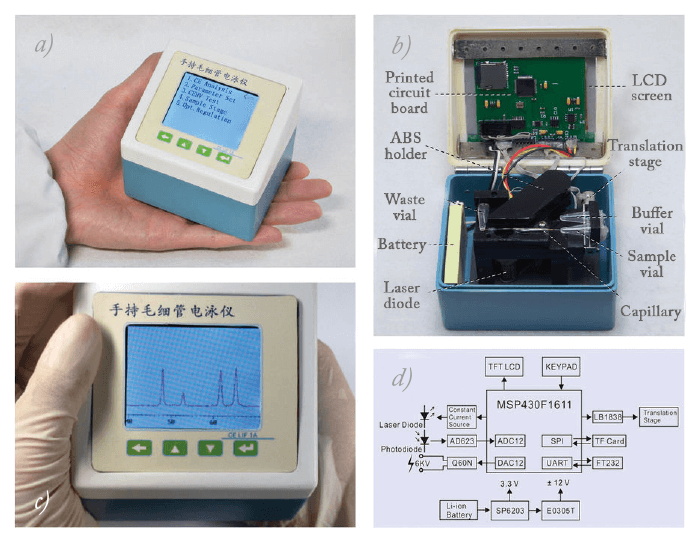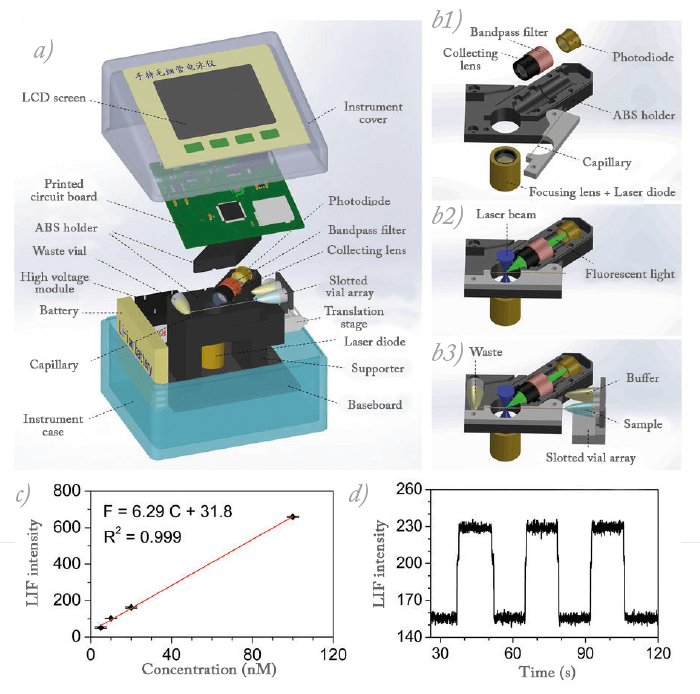What?
A device combining capillary electrophoresis (CE) with laser-induced fluorescence detection, small enough to fit in the palm of your hand (90 x 75 x 77mm). Made from off-the-shelf components, the mini-bioanalyzer costs $500 to produce, but – say the team – still has sensitivity that is comparable with larger instruments (1).

Why?
Not only is the device likely to be easier and quicker to produce in quantity, but its portability could also lend itself to point-of-use or companion diagnostic applications. The palmtop CE has already been applied to the diagnosis of colorectal cancer, where it was able to distinguish any mutation and mutation status of the KRAS gene (1).How?
A short glass capillary (4 cm) with a tapered end allows extraction of a single droplet from the sample. The CE separation is coupled to a laser-induced fluorescence detector, also developed by the team. The device is completed with a commercially available mini microcontroller, a battery, and an LCD screen (see image).Who?
The project is a collaboration between scientists from the Department of Chemistry and Innovation Center for Cell Signaling Network, Zhejiang University and the Department of Cell Biology, China Medical University, China.What next?
The team are certainly planning on commercializing the current device, but are already using similar low cost components in an attempt to miniaturize other devices; for example, for immune and biochemical assays.References
- Jian-Zhang Pan et al., “A low-cost palmtop high-speed capillary electrophoresis bioanalyzer with laser-induced fluorescence detection”, Sci Rep, 8, 1791 (2018).




